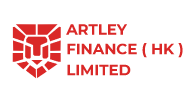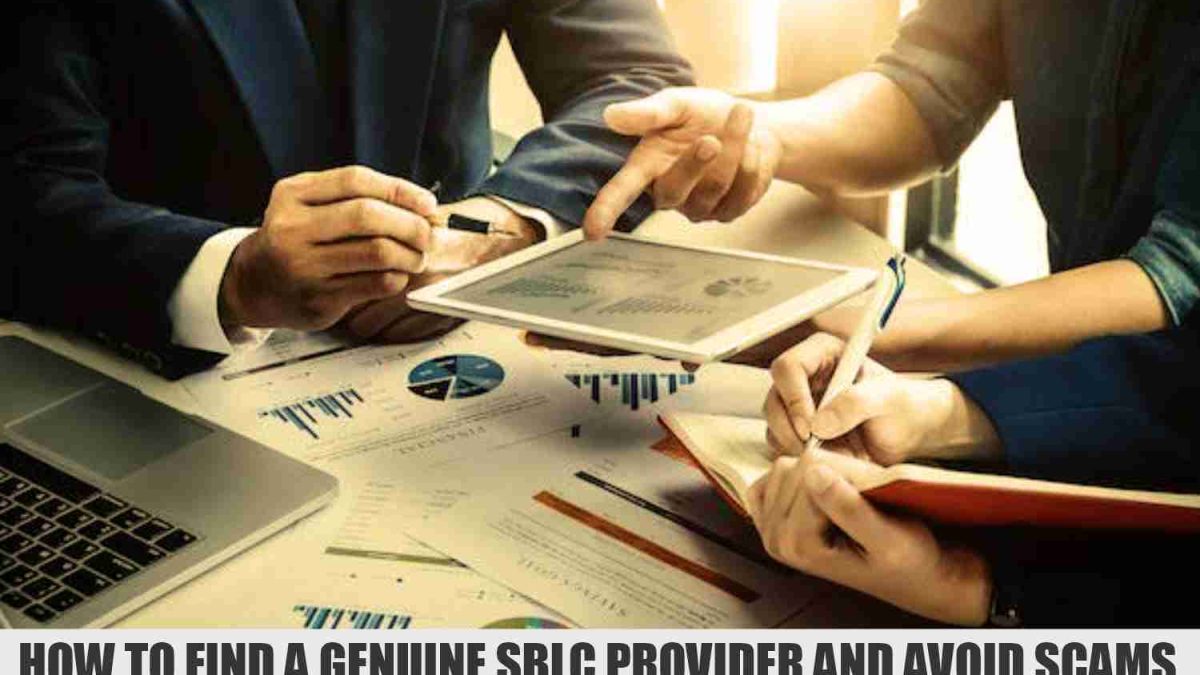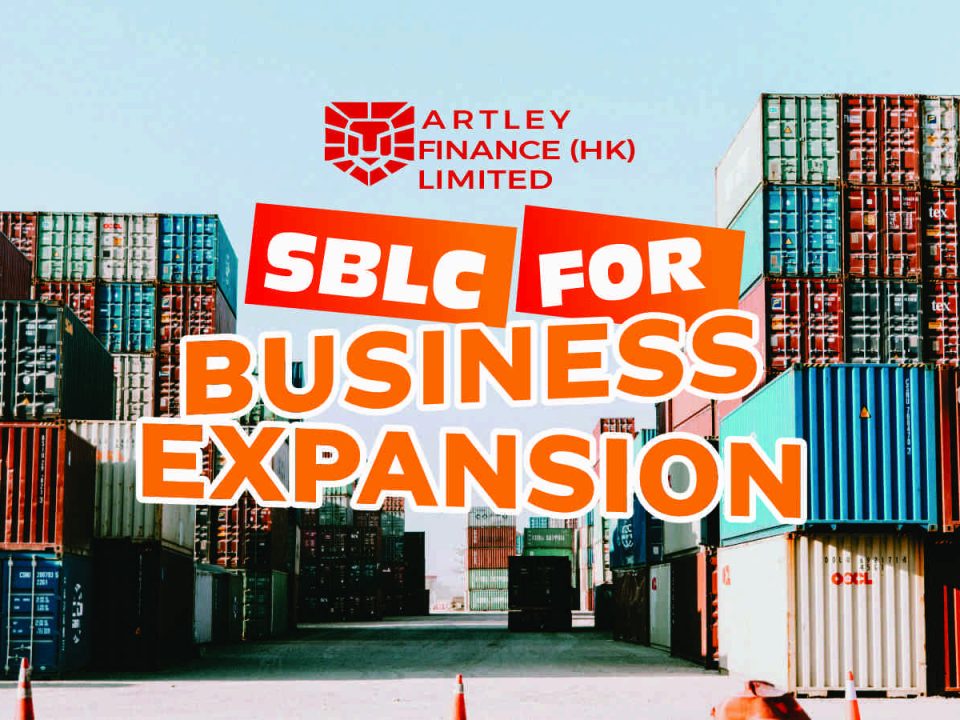How to Find a Genuine SBLC Provider – Avoiding Scams & Fake Offers

Top Bank Guarantee Providers in 2025 & How They Support Global Trade
February 20, 2025
Best SBLC Providers for International Trade & Project Financing
February 23, 2025How to Find a Genuine SBLC Provider – Avoiding Scams & Fake Offers
Introduction
To successfully find a genuine SBLC provider, businesses and investors must navigate a market filled with both legitimate options and fraudulent offers. A Standby Letter of Credit (SBLC) is a crucial financial instrument used in international trade and project financing, but with numerous fake providers in the industry, identifying a reliable source is essential. This guide will help you make informed decisions and avoid scams while securing an authentic SBLC provider.
Understanding SBLC and Its Importance
A Standby Letter of Credit (SBLC) is a financial guarantee issued by a reputable bank or financial institution to ensure that a buyer fulfills their contractual obligations. In the event that the buyer defaults, the issuing bank steps in to cover the payment, ensuring the seller or service provider is protected against financial loss. This powerful financial tool is widely utilized in securing international trade agreements, commercial real estate deals, project financing, and business loans.
Key Benefits of a Standby Letter of Credit (SBLC)
Here’s a breakdown of why an SBLC is valuable and how it can benefit your business:
1. Enhanced Credibility in the Global Market
One of the key advantages of using an SBLC is the credibility it brings to your business. When a company has an SBLC issued in its favor, it demonstrates financial stability and reliability. This assurance helps build trust with suppliers, buyers, and financial institutions, making it easier to secure business deals and partnerships worldwide.
2. Mitigates Financial Risks
Risk mitigation is crucial in business transactions, especially when dealing with unfamiliar partners. An SBLC acts as a financial safety net, ensuring that sellers, service providers, and lenders are protected against non-payment risks. In case the buyer defaults on payment, the issuing bank steps in to fulfill the financial obligation, providing security and peace of mind to the beneficiary.
3. Facilitates International Trade
Cross-border transactions often come with financial and regulatory challenges. An SBLC eliminates these barriers by offering a secure and internationally recognized payment guarantee. This makes it easier for businesses to expand globally, work with international suppliers, and engage in trade without worrying about payment defaults or legal complexities.
4. Increases Chances of Loan Approvals
For businesses seeking financing, an SBLC can be a game-changer. Many banks and financial institutions consider SBLC-backed loan applications lower risk, as they come with a strong payment guarantee. This increases the likelihood of loan approvals and allows businesses to access the capital they need for expansion, investment, or operational needs.
5. A Versatile and Flexible Financial Instrument
An SBLC is not a one-size-fits-all instrument; it can be customized to meet different business needs. Some common types of SBLCs include.
Maximizing the Benefits of an SBLC – Finding a Genuine Provider
While an SBLC offers numerous advantages, it’s essential to work with a legitimate SBLC provider to fully leverage its benefits. Scams and fake SBLC offers are prevalent, and falling victim to one can result in financial losses and legal issues. To avoid fraudulent providers, always:
- Verify the authenticity of the issuing bank or financial institution.
- Check their track record and reviews from other businesses.
- Ensure transparency in fees, terms, and conditions before proceeding.
- Seek professional advice from financial experts before committing to an SBLC transaction.
Before choosing an SBLC provider, it’s essential to be aware of the common scams that exist in the market. Many fraudsters take advantage of businesses looking for financial instruments, so recognizing these red flags can save you from costly mistakes. Here are some of the most common SBLC scams to watch out for:
Common SBLC Scams and Red Flags You Should Know
-
Fake Providers and Brokers – Scammers often pose as legitimate financial institutions or brokers, claiming to offer SBLCs when, in reality, they have no actual backing. They may present fake documents or use impressive-sounding jargon to appear credible.
-
Upfront Fee Fraud – One of the biggest scams in the SBLC space is upfront fee fraud. Fraudulent providers will demand large sums of money before delivering anything only to disappear once they’ve been paid. A reputable provider will have clear, transparent fee structures and won’t ask for excessive upfront payments without proper agreements in place.
-
Non-Verifiable Banking Details – If the issuing bank cannot be verified or doesn’t actually exist, it’s a major red flag. Always check the credentials of the issuing institution through official banking channels or financial regulatory bodies.
-
No Due Diligence or KYC Requirements – Authentic financial institutions follow strict Know Your Customer (KYC) procedures to prevent fraud and money laundering. If a provider doesn’t ask for any verification documents or due diligence, they are likely running a scam.
-
Too Good to Be True Offers – If an offer seems unbelievably good—such as unrealistically low fees, instant approval, or guaranteed high returns—it’s probably a scam. Legitimate SBLCs involve thorough processes, and no credible institution will offer financial instruments without proper evaluation.
-
Unclear or Incomplete Documentation – A genuine SBLC comes with clear documentation that complies with international banking standards. If a provider is reluctant to share full details or offers vague, incomplete paperwork, that’s a serious warning sign.
How to Find a Genuine SBLC Provider & Avoid Scams
Finding a legitimate Standby Letter of Credit (SBLC) provider is crucial to ensuring secure transactions and avoiding fraud. With many scams in the SBLC market, it’s essential to conduct thorough research and due diligence before committing to any provider. Below are the key steps to verify an SBLC provider’s authenticity and ensure you’re working with a trusted financial institution.
1. Verify the Provider’s Credentials
One of the first steps in finding a genuine SBLC provider is verifying their legitimacy. Many fraudsters claim to be financial institutions, but a few checks can reveal whether they are credible or not.
Check if the provider is a licensed bank or a registered financial institution. Reputable SBLC issuers are typically regulated by recognized financial authorities.
Look for an official website, customer reviews, and regulatory compliance. A provider with no online presence, poor reviews, or unverifiable credentials is a red flag.
Verify their registration with financial authorities like the SEC (U.S.), FCA (UK), BaFin (Germany), or local regulatory bodies. You can check their registration status on the official websites of these regulators.
2. Request Proof of Past Transactions
A legitimate SBLC provider should have a verifiable track record of successful transactions. If they are reluctant to provide proof, proceed with caution.
Ask for documentation of previous deals involving SBLC issuance. These should be backed by banking references or financial transaction history.
Request client references from businesses that have successfully obtained an SBLC through them. Genuine providers will have satisfied clients who can vouch for their services.
3. Conduct Due Diligence on the Issuing Bank
An SBLC is only as reliable as the bank that issues it. To ensure security, you should thoroughly investigate the issuing bank before proceeding.
Prefer banks with an AA or A credit rating from agencies like Moody’s, S&P, or Fitch.
Verify the bank’s SWIFT code to confirm its legitimacy. You can do this by checking the SWIFT website or contacting the bank directly.
Ensure the bank operates under international banking regulations, such as those set by the Basel Committee on Banking Supervision.
4. Engage a Trusted Financial Expert
Since SBLC transactions involve complex financial and legal terms, it’s wise to consult an expert before signing any agreements.
Work with a financial advisor or trade finance lawyer who specializes in SBLCs and bank guarantees.
Have them review the SBLC terms, provider credentials, and legal agreements to ensure compliance with financial regulations.
Seek guidance on risk management to avoid unnecessary financial exposure.
5. Avoid Providers Asking for High Upfront Fees
One of the biggest SBLC scams involves providers demanding large upfront fees and then disappearing. A legitimate SBLC provider will have a structured and transparent fee system.
Be wary of any provider asking for excessive upfront fees before verification. Most reputable institutions charge fees after due diligence and documentation are completed.
Ensure the provider has a secure escrow arrangement to protect your funds until the SBLC is successfully issued.
Compare fee structures across multiple providers to determine industry standards and spot any suspicious pricing.
6. Check for Clear Documentation and Compliance
A genuine SBLC transaction follows strict documentation and international banking compliance guidelines. If the provider cannot provide clear legal documentation, it’s a red flag.
Ensure the SBLC follows internationally recognized regulations such as UCP 600 (Uniform Customs and Practice for Documentary Credits) or ISP98 (International Standby Practices 98).
Verify that all contracts and agreements are legally binding and include anti-money laundering (AML) compliance measures.
Look for transparency in the SBLC structure—all terms, conditions, and obligations should be clearly defined in writing.
Bank Instruments Overview
Standby Letters of Credit (SBLC) and Bank Guarantees (BG)
-
Instrument: Fully Cash-Backed Bank Guarantee (BG) /Standby Letters of Credit (SBLC)
-
Face Value: EUR/USD 1 Million (Minimum) to EUR/USD 50 Billion (Maximum)
-
Issuing Banks: HSBC London/Hong Kong, Barclays Bank London, Citibank New York, Deutsche Bank Germany, or any AAA Rated Bank
-
Term: One Year and One Day (with rollovers and extensions where applicable)
-
Leasing Price: 4% of Face Value plus 2% broker commission (if applicable)
-
Payment: MT103 Swift Wire Transfer
-
Hard Copy: Delivered via Bank Bonded Courier within 7 banking days
-
Verbiage: ICC 600, URDG 758, or the latest format
-
Delivery: MT799, MT760, & Hard Copy
Our Services
-
Loans: Non-Recourse Loans, Business Loans, Secured Loans, Unsecured Loans, International Project Financing
-
Bank Instruments: Bank Guarantees (BG), Standby Letters of Credit (SBLC)
-
Letters of Credit: Demand Letters of Credit (DLC), Usance Letters of Credit
-
Investments and Wealth Management
-
Insurance Underwriting Services
-
Private Placement Programs (PPP) and Trading Platforms
-
Corporate Finance
If you’re looking to raise capital or need more information about our financing solutions, we’re here to assist you. At Artley Finance HK Limited, we specialize in the issuance, leasing, funding, and monetization of bank instruments, including SBLCs and BGs, ensuring effective financial solutions tailored to your needs.
Broker Inquiries
We welcome broker inquiries and offer a 2% commission for successful referrals. Our team actively supports both brokers and clients in securing innovative financing solutions.
If you’re interested in how a leased Standby Letter of Credit (MT760) from Barclays Bank, HSBC, Chase Bank, Standard Chartered Bank, or other top-rated institutions can help you close major deals with suppliers and contractors, feel free to reach out to us.
Conclusion
Finding a genuine SBLC provider requires careful research, verification, and financial due diligence. By following the outlined steps, businesses and investors can safeguard themselves against scams and ensure a secure financial transaction. Always prioritize working with reputable banks, seek expert guidance, and never rush into deals that seem too good to be true.
For more information on how to apply for an SBLC, please visit our application page. If you found this information helpful, we encourage you to explore more insights on our blog.
Contact us today!
Contact Information:
- Email: finance@artleyfinance.com
- Website: Artley Finance
- Blog: Artley Finance Blog




